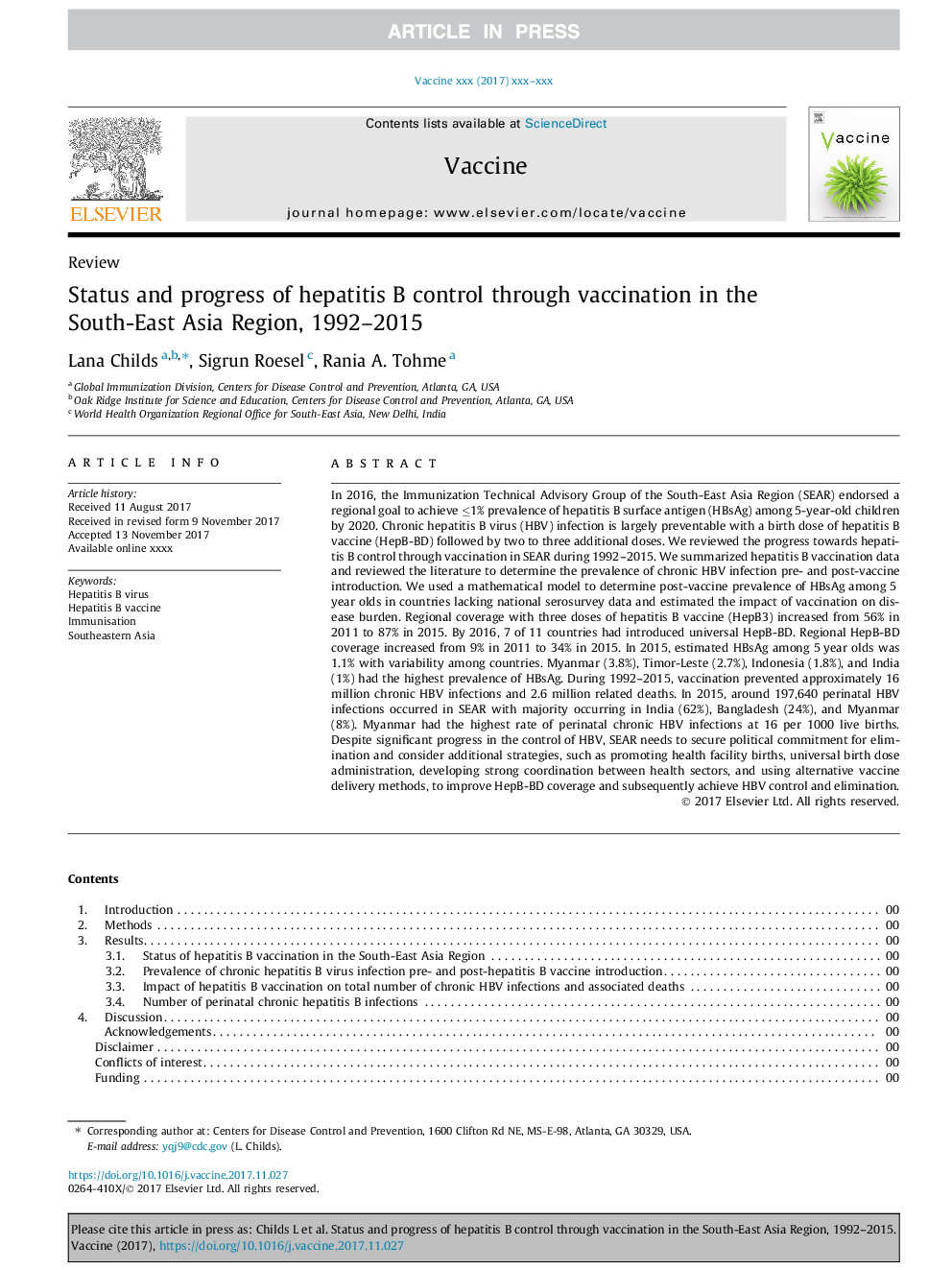| کد مقاله | کد نشریه | سال انتشار | مقاله انگلیسی | نسخه تمام متن |
|---|---|---|---|---|
| 8486281 | 1551767 | 2018 | 9 صفحه PDF | دانلود رایگان |
عنوان انگلیسی مقاله ISI
Status and progress of hepatitis B control through vaccination in the South-East Asia Region, 1992-2015
دانلود مقاله + سفارش ترجمه
دانلود مقاله ISI انگلیسی
رایگان برای ایرانیان
کلمات کلیدی
موضوعات مرتبط
علوم زیستی و بیوفناوری
ایمنی شناسی و میکروب شناسی
ایمونولوژی
پیش نمایش صفحه اول مقاله

چکیده انگلیسی
In 2016, the Immunization Technical Advisory Group of the South-East Asia Region (SEAR) endorsed a regional goal to achieve â¤1% prevalence of hepatitis B surface antigen (HBsAg) among 5-year-old children by 2020. Chronic hepatitis B virus (HBV) infection is largely preventable with a birth dose of hepatitis B vaccine (HepB-BD) followed by two to three additional doses. We reviewed the progress towards hepatitis B control through vaccination in SEAR during 1992-2015. We summarized hepatitis B vaccination data and reviewed the literature to determine the prevalence of chronic HBV infection pre- and post-vaccine introduction. We used a mathematical model to determine post-vaccine prevalence of HBsAg among 5â¯year olds in countries lacking national serosurvey data and estimated the impact of vaccination on disease burden. Regional coverage with three doses of hepatitis B vaccine (HepB3) increased from 56% in 2011 to 87% in 2015. By 2016, 7 of 11 countries had introduced universal HepB-BD. Regional HepB-BD coverage increased from 9% in 2011 to 34% in 2015. In 2015, estimated HBsAg among 5â¯year olds was 1.1% with variability among countries. Myanmar (3.8%), Timor-Leste (2.7%), Indonesia (1.8%), and India (1%) had the highest prevalence of HBsAg. During 1992-2015, vaccination prevented approximately 16 million chronic HBV infections and 2.6 million related deaths. In 2015, around 197,640 perinatal HBV infections occurred in SEAR with majority occurring in India (62%), Bangladesh (24%), and Myanmar (8%). Myanmar had the highest rate of perinatal chronic HBV infections at 16 per 1000 live births. Despite significant progress in the control of HBV, SEAR needs to secure political commitment for elimination and consider additional strategies, such as promoting health facility births, universal birth dose administration, developing strong coordination between health sectors, and using alternative vaccine delivery methods, to improve HepB-BD coverage and subsequently achieve HBV control and elimination.
ناشر
Database: Elsevier - ScienceDirect (ساینس دایرکت)
Journal: Vaccine - Volume 36, Issue 1, 2 January 2018, Pages 6-14
Journal: Vaccine - Volume 36, Issue 1, 2 January 2018, Pages 6-14
نویسندگان
Lana Childs, Sigrun Roesel, Rania A. Tohme,